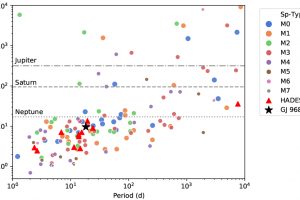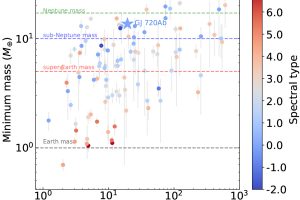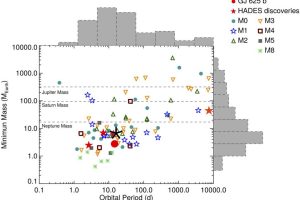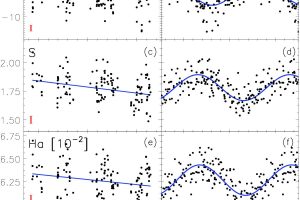Howe many planets around M dwarf stars? The study: “HADES RV Programme with HARPS-N at TNG. XV. Planetary occurrence rates around early-M dwarfs” of M. Pinamonti (INAF-OATo) recently appeared on A&A
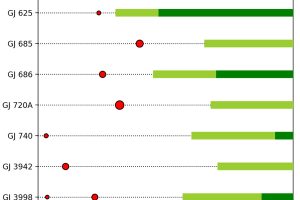
M dwarf stars, with temperature ranging between 2400 and 3900 K and mass between 0.08 and 0.7 solar masses, are ideal targets for the search of exoplanets. This because the most important techniques to search for exoplanets are more effective when applied to stars of this spectral type than to more massive stars. For instance, the method of radial velocity
» Read more
